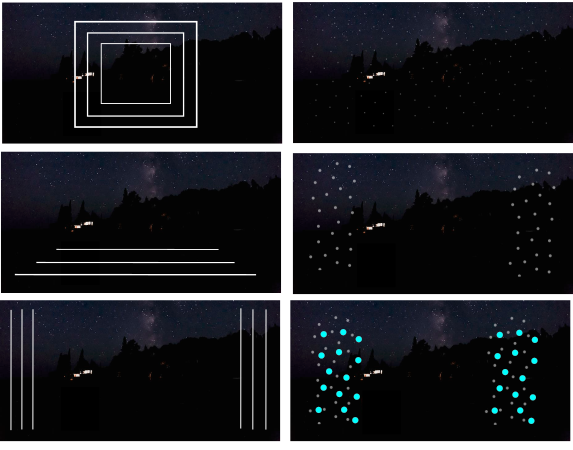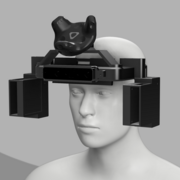Fall prevention: Innovative glasses assist with real-space orientation information
Abstract
In order to prevent falls, the wearers of smart glasses or AR glasses are shown optical indicators at the edge of the field of vision in the form of, for example, squares or dot patterns.
Advantages
- The optical indicators should be shown at the edge of the field of vision so that it is not unnecessarily restricted.
- The optical indicators remain fixed in the scene and do not move together with the head.
- A combination of vertical lines and optical flow should be used.
- Missing and weak vestibular stimuli in the brain are supplemented and falls can thus be prevented.
Fields of application
The invention is targeted primarily at older persons, but can also be helpful for users with impaired vision.
Backgound
For people over the age of 65 in particular, the risk of a fall rises and also, due to aging, the risk of injuries in the process. For example, 5-7 % of those over the age of 65 have to receive treatment after a fall. The cost of treatment in the USA amounts to an average of €56,000 per fall. Even though these costs are much lower in Europe, an effective fall prophylaxis could be worthwhile for health insurance funds as 18.1 million people are aged 65 or older in Germany, and therefore there would also be a large number of potential users of these glasses.
Problem
There are various methods of fall prevention, for example electric or galvanic stimulation which triggers a balance reaction. Likewise, vibrations as stimuli have already been worked with. Other approaches attempt to warn of possible falls before they happen using early warning systems on smartphones.
Optical stimuli have not yet been used for the prevention of falls until now. There are only systems which introduce horizontal lines to the field of vision in order to prevent seasickness. However the invention presented here goes far beyond these horizontal lines.
Solution
The invention describes a procedure consisting of three units: An inertial measurement unit (IMU), a processing unit and a display unit with which the wearers of smart glasses or other AR (augmented reality) glasses can be given optical indicators such as various geometric shapes (e.g. lines, squares, dot patterns) or even patterns with different depth information. The patterns can become larger or smaller, depending on whether the observer is walking towards them or away from them. Likewise, they can be hidden by slowly being faded out when the head is turned.
The aim of showing indicators is to provide the observer with parallax information which is helpful for the user in particular when it is dark, when standing in front of a white wall or also when standing next to a bus which is just setting off.
The optical indicators have the role of providing the brain with additional information, in particular for wearers with an impaired sense of balance. Using this additional optical information, the brain can replace missing or weak vestibular stimuli, thus avoiding falls.


